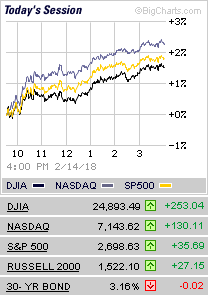Many investors are fixated on the return of “the market”—usually meaning a benchmark like the Dow Jones Industrial Index or the S&P 500 Index.
And why shouldn’t they be? The financial media treat the changes in these indexes as though they’re among the most important news of each day. Unfortunately, many investors believe that their portfolios should return the same as “the market,” or even more.
But matching or beating a stock index year in and year out would actually be a sign that a person is putting their savings at too much risk. A solid portfolio is designed with as much emphasis on avoiding big losses as on delivering strong performance.
Major losses can turn your portfolio—and the future plans that depend on it—upside down. That’s especially true for those who are closer to retirement. It’s harder to make up losses when there’s not much time left on the game clock.
That’s the reason responsible advisors manage client portfolios with an eye toward what’s known as risk-adjusted return. Risk-adjusted return measures your returns against the amount of risk you’ve taken on to earn those returns. If two stocks each return 10%, the stock from the more conservative, stable company would have the superior risk-adjusted return.
Good risk-adjusted returns are a result of careful portfolio diversification. For starters, a portfolio should own a variety of stocks and fixed-income vehicles. Often, further diversification is achieved with investments in “alternative” areas such as real estate.
Insurance products that provide guaranteed income, including retirement-income annuities and permanent life insurance, can contribute significantly to your overall portfolio stability and risk-adjusted returns.
Will risk-adjusted portfolios beat the market? Not often, because that’s not what they’re designed for. Over the long term, however, avoiding losses and compounding gains should put your goals within reach. And knowing that your money is protected from market volatility can help you achieve invaluable peace of mind.

